Brutalist Interior Design emerged as a bold and distinctive style in the mid-20th century. Characterized by raw, exposed materials, monolithic forms, and a focus on functionality, this design style celebrates the essence of materials in their purest form. In this article, we will explore the history, key characteristics, and how to incorporate Brutalist elements into your own home.
The History and Origins of Brutalist Interior Design
Brutalist Interior Design originated as an architectural movement in the 1950s, gaining popularity in the 1960s and 1970s. It was a response to the sleek and decorative styles that dominated the mid-century period. Architects and designers began to experiment with exposing the structural elements of buildings, showcasing the beauty of raw concrete, steel, and other industrial materials. The philosophy of honesty in design influenced this movement, with an emphasis on function over decoration.
20 Key Characteristics of Brutalist Interior Design
1. Exposed Concrete
One of the defining features of Brutalist Interior Design is the use of exposed concrete walls, floors, and ceilings. The rough texture and grey tones create a sense of rawness and authenticity. Implement exposed concrete by incorporating it into accent walls, floors, or ceilings. Consider polished concrete floors for a modern touch or textured concrete walls for a raw, industrial feel.
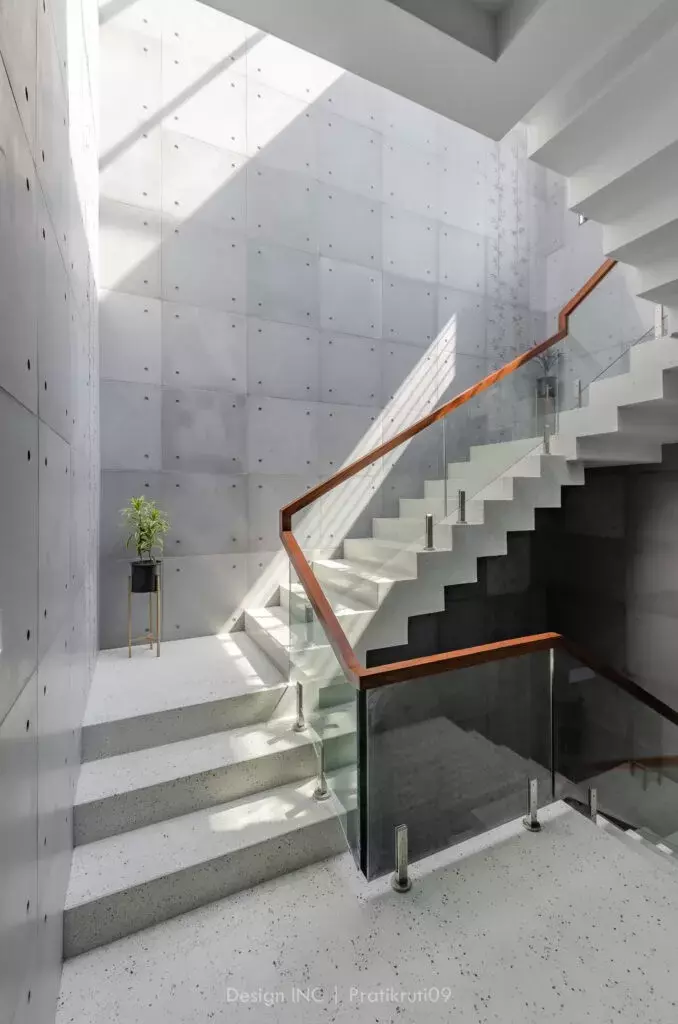
2. Geometric Shapes
Brutalist design often incorporates strong geometric shapes, such as angular forms and sharp edges. Angular furniture and shapes create a cohesive, organized environment, accentuating the overall structured feel of the space. Integrate geometric shapes through furniture choices, such as angular sofas or tables. Use rugs with geometric patterns and consider wall art or sculptures that follow geometric lines.

3. Minimalism
Brutalist interiors are known for their minimalistic approach, with a focus on essential elements and a lack of unnecessary ornamentation. Clean lines in furniture further accentuate the functional design, promoting simplicity and purpose. Opt for a neutral color palette to enhance simplicity and focus on functional pieces.
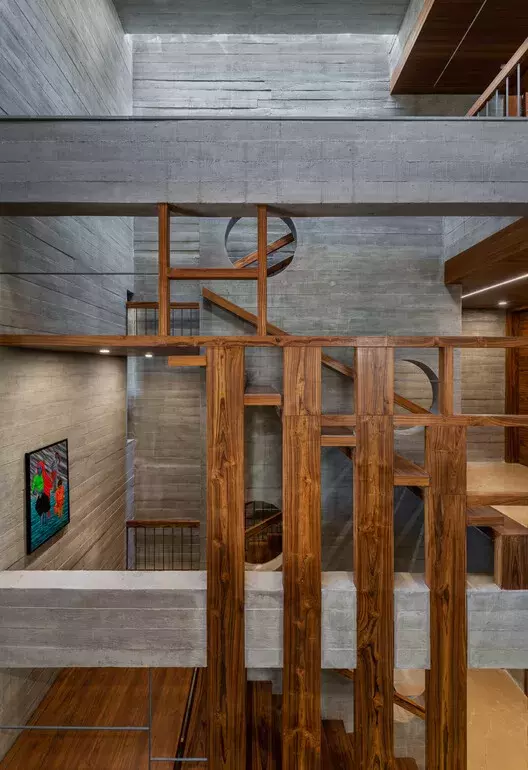
4. Industrial Materials
In addition to concrete, Brutalist design embraces other industrial materials like steel, glass, and brick. Use them in furniture, lighting fixtures, or decorative elements. Choose metal-framed furniture and exposed brick walls for an authentic touch. These materials add to the rugged and utilitarian aesthetic.
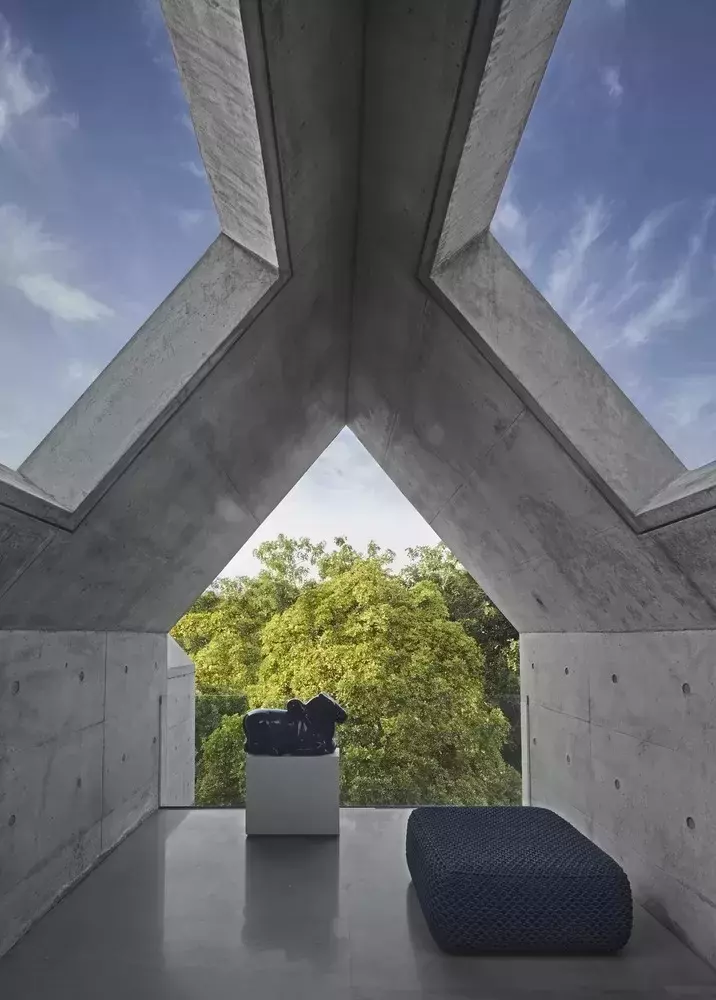
5. Monolithic Forms
Brutalist interiors often feature large, solid forms that dominate the space. These monolithic structures create a sense of power and grandeur, contributing to their overall commanding presence. Include monolithic forms by selecting large, statement furniture pieces or installing floor-to-ceiling bookshelves or cabinets.
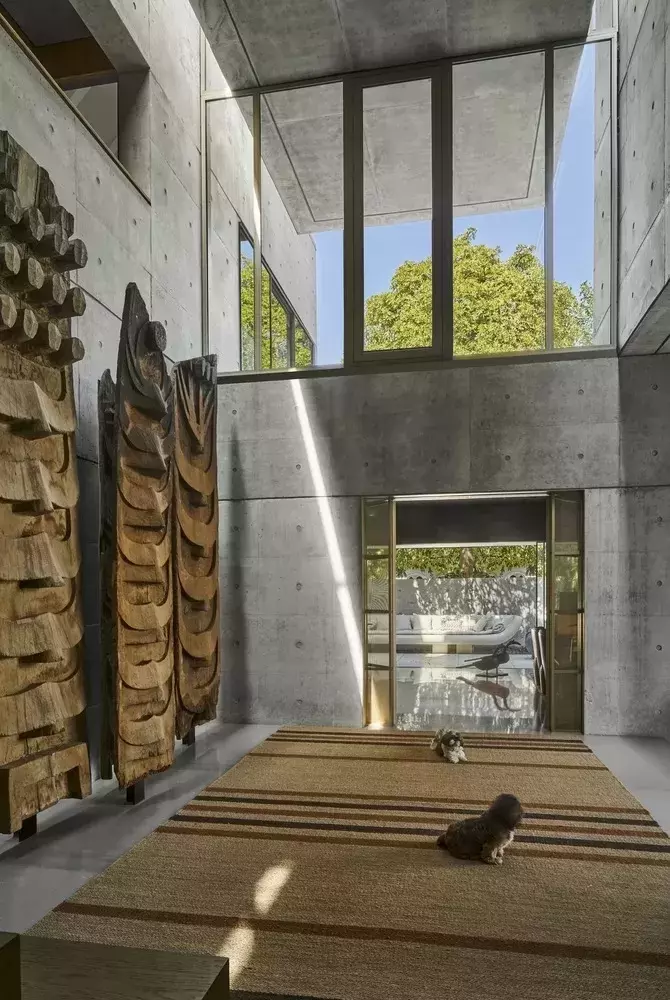
6. Raw and Unfinished Surfaces
Unlike traditional design styles that strive for polished perfection, Brutalist design celebrates imperfections, finding beauty in raw and unfinished surfaces. It adds character and authenticity to the space. Integrate raw surfaces into your design by leaving concrete or brick walls unfinished. Use reclaimed wood for furniture or exposed beams to enhance the rugged aesthetic.

7. Natural Light
Brutalist interiors use natural light to accentuate the raw materials and create a play of light and shadow. It helps create a seamless connection with the outdoors. Maximize natural light by installing large windows or glass doors. Opt for sheer or light-colored curtains to allow ample sunlight while maintaining privacy.
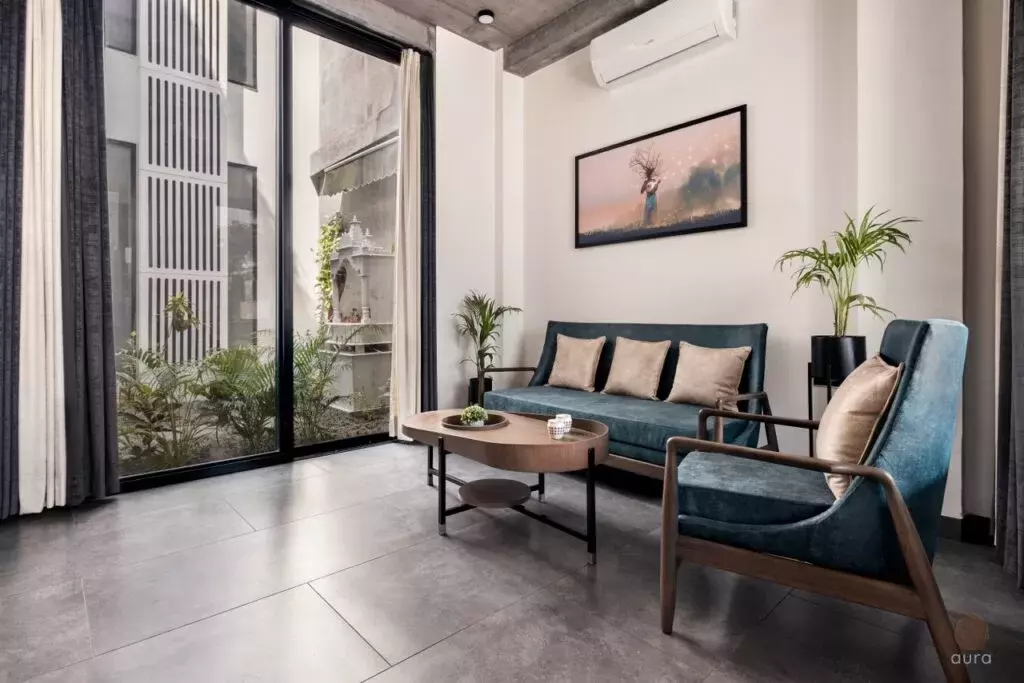
8. Bold Colors
While Brutalist design tends to lean towards neutral tones, pops of bold, contrasting colors are often used to create visual interest and focal points within the overall muted palette. Infuse bold colors through accent furniture, vibrant artwork, or colorful textiles like cushions and rugs. Consider a statement wall in a bold hue for added impact.

9. Functional Furniture
The furniture in Brutalist interiors is typically simple and functional, with clean lines and minimal embellishments. Choose functional furniture with built-in storage solutions. Opt for multi-purpose pieces like sofa beds or ottomans with hidden storage to maximize space efficiency.
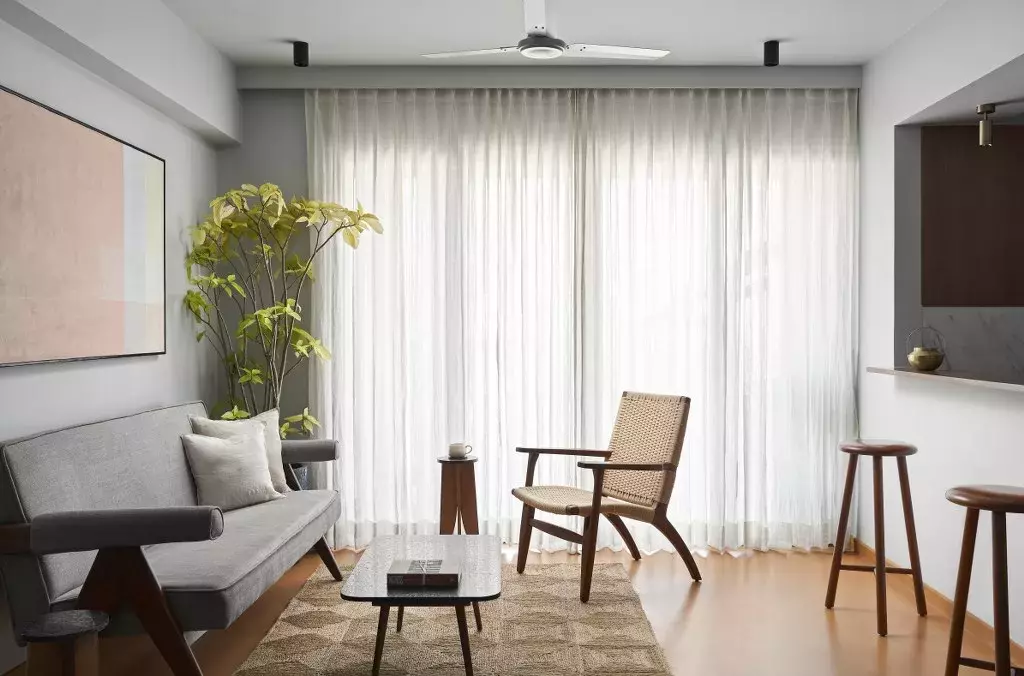
10. Open Floor Plans
Open floor plans are common in Brutalist interior design, allowing for seamless flow between spaces and emphasizing the importance of functionality. Create an open floor plan by removing unnecessary walls and using furniture to delineate different areas. Ensure a cohesive design flow with consistent materials and colors.

11. Sculptural Lighting
Unique and sculptural lighting fixtures are often incorporated into Brutalist interiors, acting as art pieces in their own right. Install pendant lights with unique designs or floor lamps with artistic forms that can serve as functional art pieces.
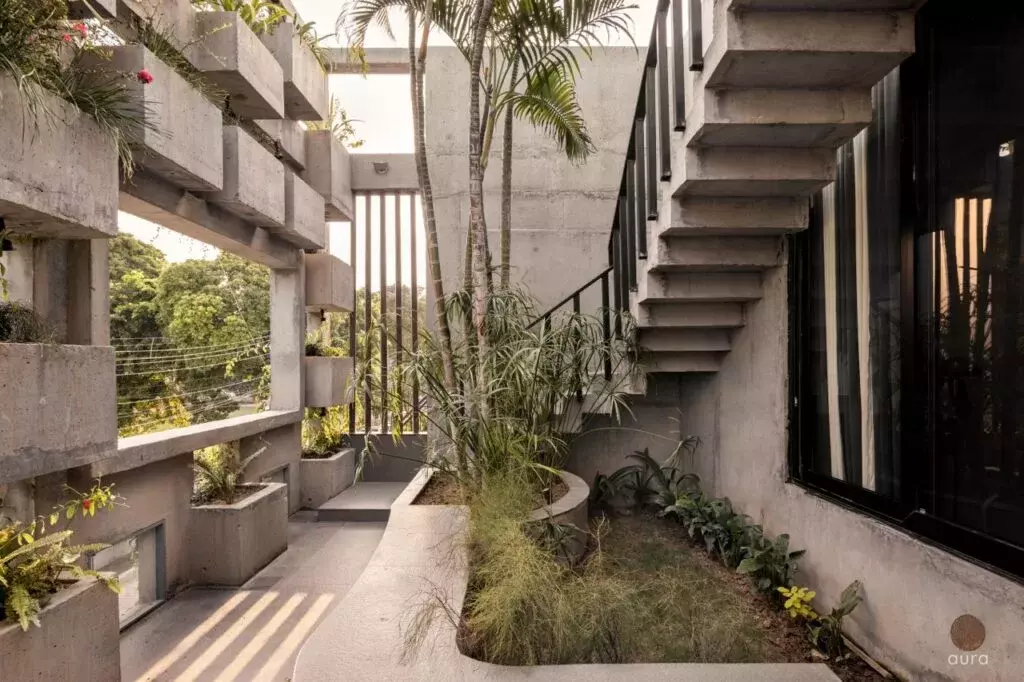
12. Integration of Nature
Despite its industrial aesthetic, Brutalism often incorporates natural elements that provide a connection to the outdoors. Add indoor plants, create a green wall, or incorporate natural materials like wooden furniture. Large windows connect interiors with outdoor views.

13. Texture Play
Brutalist design is known for its use of texture play, which involves combining rough and smooth surfaces to create a tactile experience. To achieve this look, experiment with different materials, such as leather, metal, and textured fabrics. Adding textured rugs, throw pillows, or wall coverings can also bring depth and variety to the space.

14. Integration of Art
Art plays a significant role in Brutalist interiors, with large-scale sculptures or paintings adding visual interest and serving as focal points. Showcase large-scale sculptures or paintings as central features. Consider gallery-style walls or dedicated art spaces to emphasize the importance of art in the design.

15. Bold Accents
To create visual contrast, use bold accents in your Brutalist interior design. Introduce bold accents through statement furniture pieces, vibrant upholstery, or colorful decor. These accents create visual interest within the neutral Brutalist palette.

16. Minimal Accessories
Brutalist interiors tend to have minimal accessories, allowing the focus to remain on the architectural elements and materials. Select a few impactful pieces, like unique vases or sculptures, to avoid clutter.
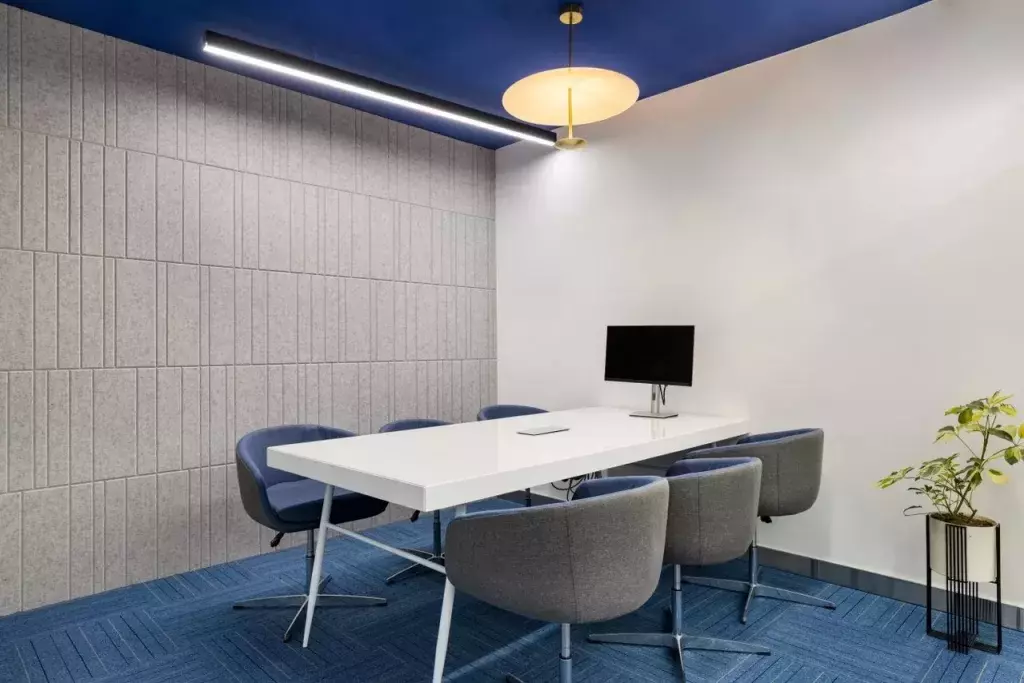
17. Multifunctionality
In line with the philosophy of functionality, Brutalist interiors often incorporate multifunctional furniture or built-in storage solutions. For example, you can use a dining table that doubles as a desk to optimize space. It can help you maintain a clean and organized environment.
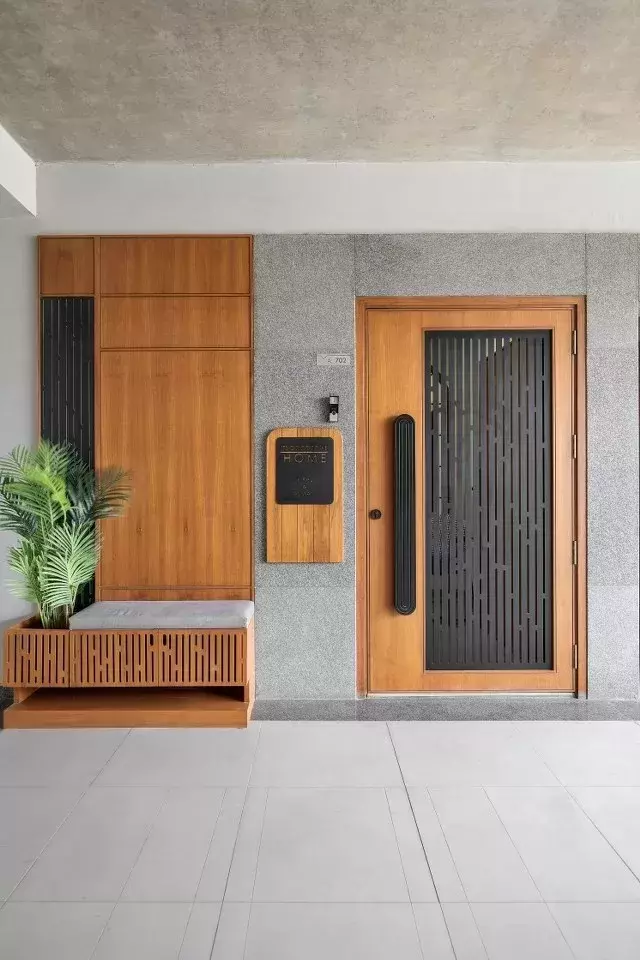
18. Spatial Hierarchy
Brutalist design often creates a sense of hierarchy by defining different spatial zones within a larger space, such as using different ceiling heights or changing flooring materials. Arrange furniture to create designated areas within the open floor plan.

19. Raw and Industrial Fixtures
Brutalist interiors feature industrial and utilitarian fixtures like lighting fixtures with exposed bulbs or metal pendants. Choose door hardware and other fixtures that complement the overall utilitarian theme.
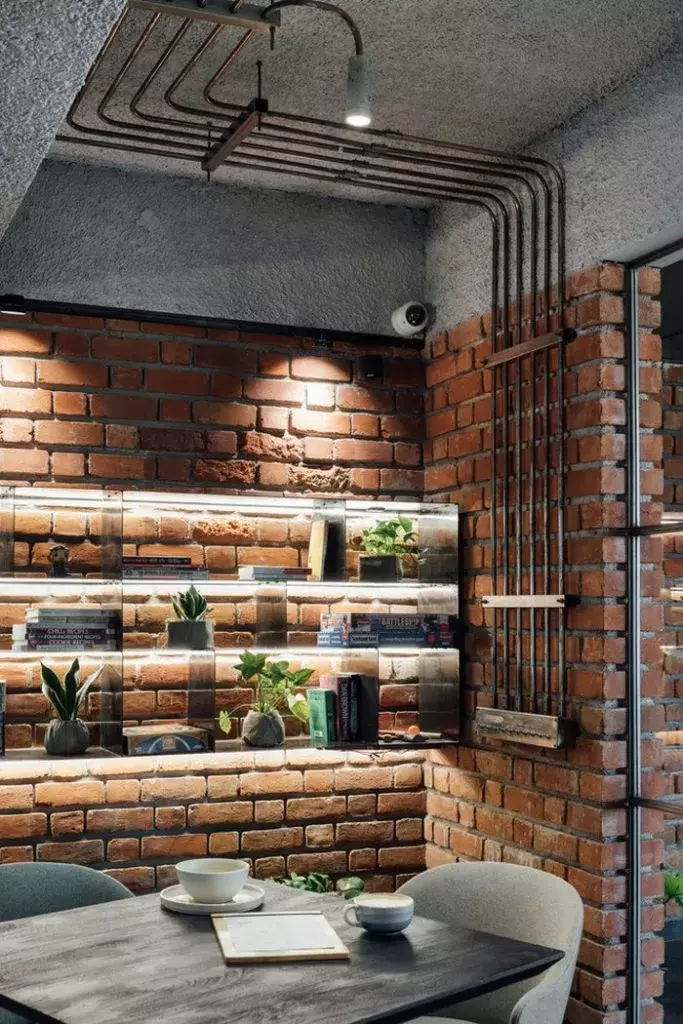
20. Embracing Imperfections
Brutalist design aesthetic values imperfections and embraces the natural wear and tear on materials over time, which adds character and authenticity to the space. To achieve an authentic Brutalist look, allow materials to age naturally and showcase their wear and patina. Avoid over-polishing surfaces, and instead let the materials develop their unique character over time.

How to Incorporate Brutalist Elements Into Your Own Home
Incorporating Brutalist elements into your own home can be an exciting endeavor. Start by selecting a space that allows the boldness and grandeur of Brutalist design to shine. Consider exposing concrete walls or adding concrete-like textures to create an industrial feel. Embrace geometric shapes through furniture, lighting, or architectural details. Opt for minimalistic and functional furniture pieces that prioritize utility over ornamentation. Integrate natural light by incorporating large windows or skylights. Experiment with bold colors and accents to create visual interest. Finally, curate a collection of art and sculptures that align with the Brutalist aesthetic, acting as focal points within your space.
Challenges and Considerations When Implementing Brutalist Interior Design
While Brutalist Interior Design can create a unique and striking space, it is important to consider some challenges and limitations. The raw and unfinished nature of the materials used in Brutalist design requires proper maintenance and care to prevent degradation. The bold and minimalist aesthetic may not appeal to everyone, so it’s essential to consider personal preferences and the overall functionality of the space. The integration of Brutalist elements may require professional expertise, especially when dealing with structural changes or the use of industrial materials. Consulting with an experienced designer or architect can help navigate these challenges and ensure a successful implementation of Brutalist Interior Design.
The Future of Brutalist Interior Design
As with any design movement, Brutalist Interior Design has evolved over time and continues to do so. While it may have initially been associated with large-scale public buildings, Brutalism has found its way into residential spaces, hospitality venues, and even furniture design. As our appreciation for raw and honest design grows, we can expect to see Brutalist elements incorporated into various interior styles. The focus on functionality, authenticity, and the celebration of materials will continue to resonate with those seeking a unique and bold aesthetic.
Conclusion: Embracing the Boldness of Brutalist Interior Design
Brutalist Interior Design offers a bold and distinctive aesthetic that celebrates the essence of raw and unadorned materials. With its focus on functionality, minimalism, and geometric forms, this design style creates spaces that exude strength, character, and authenticity. By incorporating exposed concrete and industrial materials and embracing imperfections, you can transform your home into a showcase of Brutalist design. However, it is essential to consider the challenges and limitations associated with this style while also exploring its future potential. So, why not embrace the boldness of Brutalist Interior Design and create a space that truly stands out?
Content Writing And Research By: Ar. Kiran Rathi









